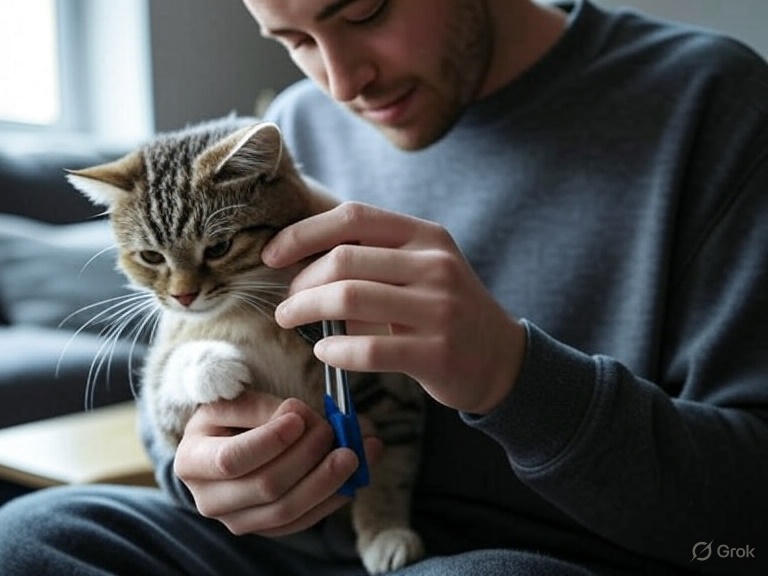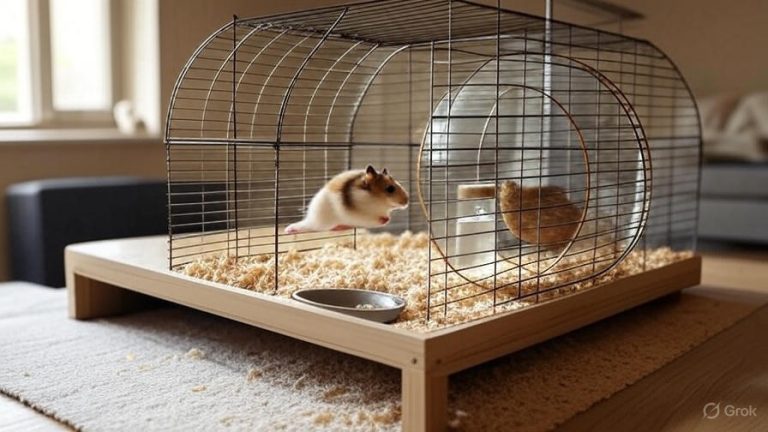How to Get Cats to Get Along?
Bringing multiple cats into your home can feel like walking a tightrope. One moment they’re peacefully coexisting, and the next, you’re breaking up a fur-flying battle royal in your living room. Many cat owners struggle with feline conflicts that turn their peaceful homes into war zones.
The good news? Cats can absolutely learn to live together harmoniously. Success depends on your approach, patience, and the right strategies. This comprehensive guide will show you exactly how to help your cats build lasting friendships and create a peaceful multi-cat household.
Why Cats Fight: The Root of Feline Conflicts
Cats are naturally territorial creatures. In the wild, they establish and defend their territory to ensure access to food, water, and safe sleeping spots. When you bring multiple cats together in one space, you’re essentially asking them to share resources they’d normally protect fiercely.
Territory disputes trigger most cat conflicts. Your home becomes a battlefield when cats compete for prime real estate like sunny windowsills, cozy beds, or elevated perches. Each cat wants to claim the best spots as their own personal kingdom.
Resource competition also sparks fights. Food bowls, water dishes, and litter boxes become precious commodities. When cats feel their access to essentials is threatened, stress levels skyrocket and aggressive behaviors emerge.
Social hierarchy plays a crucial role too. Cats naturally establish pecking orders, and the process can get messy. Some cats are naturally more dominant while others prefer to stay in the background. Problems arise when multiple cats vie for the alpha position or when a confident cat bullies a more timid one.
Past experiences shape how cats react to other felines. A cat who lived alone for years will struggle more with new housemates than one who grew up in a multi-cat environment. Traumatic encounters with other cats can also create lasting fear and aggression.
Pre-Introduction Preparation: Setting the Stage for Success
Before bringing a new cat home, you need to prepare your space and your current cats. Proper preparation prevents many conflicts and sets everyone up for success.
Create separate territories within your home. Your new cat needs a dedicated room with everything they need: food, water, litter box, scratching post, toys, and comfortable sleeping areas. This “base camp” gives them a safe space to decompress while gradually adjusting to new smells and sounds.
Stock up on resources. The golden rule for multi-cat households is “one per cat plus one extra.” This applies to litter boxes, food bowls, water dishes, and sleeping areas. Having abundant resources reduces competition and territorial disputes.
Install vertical territory options. Cats feel more secure when they can climb high and survey their domain. Cat trees, wall shelves, and tall scratching posts give each cat their own elevated space. Vertical territory effectively doubles your available real estate.
Prepare scent introduction tools. Gather clean towels, socks, or small blankets that you can use for scent swapping. These items become crucial tools for helping cats get familiar with each other’s smell before face-to-face meetings.
Set up feeding stations in different areas. Distance between food bowls prevents resource guarding and reduces mealtime stress. Consider feeding cats in separate rooms if space allows.
The Proper Introduction Process: A Step-by-Step Approach
Successful cat introductions happen slowly and systematically. Rushing the process almost guarantees conflict and sets back your progress by weeks or months.
Phase 1: Scent Introduction (Days 1-7)
Start with scent swapping before the cats ever see each other. Rub a clean towel on your existing cat’s cheeks and face, then place it near your new cat’s food bowl. Do the same with your new cat’s scent for your resident cat.
Feed the cats on opposite sides of the door separating them. Start with bowls far from the door and gradually move them closer over several days. This creates positive associations with each other’s presence and scent.
Switch the cats’ locations daily. Let your new cat explore the main house while confining your resident cat to the newcomer’s room. This allows both cats to investigate each other’s territory and become familiar with scents without direct confrontation.
Phase 2: Visual Introduction (Days 7-14)
Begin visual contact using a baby gate or cracked door. The cats should be able to see each other but not make physical contact. Watch their body language carefully during these sessions.
Keep initial visual sessions brief – just a few minutes at first. End on a positive note before any signs of aggression appear. Gradually increase the duration as both cats become more comfortable.
Continue feeding on opposite sides of the barrier. The goal is to help cats associate seeing each other with good things like mealtime. If either cat won’t eat, the introduction is moving too fast.
Phase 3: Supervised Interaction (Days 14-21)
Allow brief, supervised meetings in a neutral space. Have interactive toys ready to redirect attention if tension rises. Keep sessions short and positive.
Never force interactions. Let the cats approach each other at their own pace. Some cats will immediately start playing while others need weeks to warm up to each other.
Watch for positive body language: relaxed postures, slow blinking, parallel walking, and mutual grooming attempts. These signs indicate growing acceptance.
Phase 4: Gradual Integration (Weeks 3-8)
Slowly increase supervised time together. Allow the cats to eat in the same room with bowls spaced apart. Gradually move the bowls closer as comfort levels increase.
Introduce shared play sessions. Use wand toys to encourage parallel play where both cats chase the same toy without competing directly with each other.
Monitor interactions closely but avoid hovering. Cats need space to work out their relationship dynamics naturally.
Managing Resources to Prevent Competition
Resource management is critical for maintaining peace in multi-cat homes. Even cats who generally get along can fight over valuable items if resources are scarce.
Litter Box Strategy
Place litter boxes in different areas of your home. Cats prefer privacy when using the bathroom, and having options prevents territorial guarding of bathroom facilities.
Keep boxes clean by scooping daily and changing litter weekly. Dirty boxes create stress and can trigger inappropriate elimination, which leads to territorial conflicts.
Use different types of litter if your cats have preferences. Some cats are particular about texture and scent, so accommodating individual preferences prevents bathroom-related stress.
Feeding Solutions
Establish regular feeding schedules to reduce food anxiety. When cats know meals come at predictable times, they’re less likely to guard food aggressively.
Create physical separation during meals. Use different rooms, feed at different heights, or use feeding stations with dividers. Distance prevents resource guarding and allows each cat to eat peacefully.
Consider puzzle feeders for mental stimulation. These slow-feeding devices keep cats occupied longer and reduce boredom-related conflicts.
Territory Management
Provide multiple comfortable sleeping areas throughout your home. Cats often prefer different spots depending on temperature, time of day, and their relationship with other cats.
Install cat furniture at different heights to create vertical territories. Shy cats often prefer elevated hiding spots while confident cats may claim the highest perches.
Rotate toys regularly to prevent boredom and reduce competition over favorite items. Having a variety of toys available means cats are less likely to fight over one special item.

Recognizing Warning Signs and When to Intervene
Learning to read cat body language helps you identify brewing conflicts before they explode into full-scale fights. Early intervention prevents escalation and protects the relationships you’re trying to build.
Stress Signals to Watch For
Excessive hiding indicates a cat feels unsafe or overwhelmed. While some initial hiding is normal with new cats, prolonged isolation suggests the introduction process needs to slow down.
Changes in eating or bathroom habits often signal stress. Cats may eat less, refuse to use litter boxes, or eliminate outside the box when feeling threatened by other cats.
Aggressive postures include arched backs, puffed tails, flattened ears, and hissing. These are clear warnings that a cat feels defensive and may lash out.
Over-grooming or hair pulling can indicate anxiety about living with other cats. Stress-related grooming often creates bald patches or skin irritation.
When to Step In
Break up fights immediately but safely. Never grab fighting cats with your hands – you’ll likely get injured. Instead, use a loud noise, spray bottle, or throw a towel over the cats to interrupt the conflict.
Separate the cats after any fight and restart the introduction process from an earlier phase. Fighting sets back progress and creates negative associations between the cats.
Redirect aggressive energy with interactive play. A cat showing signs of building aggression can often be distracted with a feather wand or laser pointer.
Creating Positive Associations
Use treats and praise when cats are calm around each other. Reward peaceful coexistence with high-value treats to reinforce good behavior.
Engage in parallel activities like brushing both cats simultaneously (at a distance) or playing with separate toys in the same room. These shared positive experiences build good associations.
Never punish aggressive behavior with yelling or physical corrections. Punishment increases stress and makes cats more likely to fight, not less.
Long-Term Strategies for Maintaining Harmony
Building lasting peace between cats requires ongoing attention and management. Even cats who eventually become best friends need proper environmental setup and consistent routines.
Environmental Enrichment
Provide plenty of mental stimulation through puzzle toys, rotating play sessions, and environmental variety. Bored cats are more likely to create conflicts with housemates.
Create window perches for bird watching and outdoor entertainment. Cats who can observe the outside world are generally more content and less likely to take frustrations out on other cats.
Install scratching posts in multiple locations and materials. Cats have individual preferences for scratching surfaces, and having options prevents competition and territorial marking conflicts.
Routine and Predictability
Maintain consistent daily schedules for feeding, play, and attention. Cats thrive on routine, and predictability reduces anxiety that can trigger conflicts.
Give individual attention to each cat daily. One-on-one time helps cats feel secure in their relationship with you and reduces competition for human attention.
Monitor group dynamics regularly. Cat relationships can change over time due to health issues, stress, or environmental changes. Stay alert to shifts in how your cats interact.
Health Considerations
Schedule regular veterinary checkups for all cats. Health problems can change a cat’s behavior and disrupt established social hierarchies. A cat in pain may become more aggressive or withdrawn.
Watch for signs of illness that affect social behavior. Dental problems, arthritis, or other painful conditions can make previously friendly cats become irritable with housemates.
Keep vaccinations current and maintain good parasite prevention. Healthy cats are better equipped to handle the stress of living in multi-cat households.
Troubleshooting Common Problems
Even with perfect preparation, some cats face specific challenges when learning to coexist. Here are solutions for the most common multi-cat problems.
The Persistent Bully
Some cats consistently pick on more timid housemates. Create escape routes and high perches for the victim cat while working to redirect the bully’s energy through increased play and exercise.
Use positive interruption techniques when you see bullying behavior starting. Distract the aggressor with a toy or treat rather than punishing the behavior.
Consider pheromone diffusers (Feliway) to reduce overall stress levels in the household. These synthetic calming scents can help aggressive cats feel more relaxed.
The Scaredy Cat
Extremely fearful cats need extra patience and modified introduction techniques. Create multiple safe hiding spots and allow much longer timeframes for each phase of introduction.
Build confidence through positive experiences like treats, gentle play, and quiet interaction. Fearful cats often respond well to predictable routines and patient owners who don’t force interactions.
Never corner or force a scared cat to interact. This creates trauma and sets back progress significantly. Let fearful cats approach at their own pace.
Resource Guarding Issues
Cats who guard food, toys, or territory need careful management and behavior modification. Increase the abundance of guarded resources and create physical barriers during conflicts.
Work on training exercises that reward sharing and calm behavior around resources. This might include treating cats for eating peacefully near each other or rewarding them for walking away from disputes.
Consider consulting a veterinary behaviorist for severe resource guarding cases. Professional help can provide customized solutions for stubborn problems.
Regression After Success
Sometimes cats who previously got along suddenly start fighting again. This often indicates stress from environmental changes, health issues, or disrupted routines.
Return to earlier introduction phases temporarily while identifying and addressing the underlying cause. Don’t assume cats who once got along will automatically return to peaceful relationships without intervention.
Look for triggers like new furniture, changed schedules, outside cats, or household stress that might be affecting your cats’ behavior.
Building Positive Relationships Between Cats
The ultimate goal isn’t just preventing fights – it’s creating genuine friendships between your cats. Some strategies actively encourage bonding and positive interactions.
Group Activities
Schedule parallel play sessions where cats chase separate toys in the same space. This creates positive associations with being together without direct competition.
Try group training sessions using clicker training or simple commands. Cats who learn together often develop stronger bonds through shared experiences.
Create puzzle-solving opportunities that benefit from teamwork. While cats aren’t naturally collaborative, some enjoy investigating new objects or treats together.
Encouraging Natural Behaviors
Allow cats to establish their own social hierarchy without interference (as long as no one gets hurt). Cats who work out their own relationships often develop more stable, lasting bonds.
Provide opportunities for mutual grooming by placing cats near each other during relaxed times. Some cats naturally start grooming each other when they feel comfortable and safe.
Respect individual personalities and relationship styles. Not all cats will become cuddly best friends, and that’s perfectly normal. Some cats maintain polite, respectful relationships without deep bonding.
Celebrating Small Victories
Acknowledge progress in small steps. Cats who simply ignore each other instead of fighting have made significant progress. Don’t expect dramatic friendship displays immediately.
Document positive interactions with photos or videos. This helps you track progress and remember that relationships are building even when daily life feels challenging.
Be patient with the timeline. Some cats become friends within weeks while others take months or even years to fully accept each other. Each relationship develops at its own pace.
Conclusion: Creating Your Peaceful Multi-Cat Home
Getting cats to get along requires patience, preparation, and consistent effort, but the rewards are immense. A harmonious multi-cat household brings joy, entertainment, and the satisfaction of watching feline friendships develop.
Remember that success looks different for every group of cats. Some will become inseparable companions who groom each other and sleep intertwined. Others will maintain respectful distances while peacefully sharing space and resources. Both outcomes represent successful multi-cat relationships.
Start with proper introductions, manage resources carefully, and stay committed to the long-term process. With time and effort, most cats can learn to coexist peacefully and even develop genuine affection for their housemates.
Your role as a cat parent is to facilitate positive interactions while providing a stress-free environment where relationships can flourish naturally. The investment in time and energy pays off with years of peaceful coexistence and the unique joy that comes from watching cats who truly get along.
The journey toward feline harmony isn’t always smooth, but it’s absolutely worth the effort. Your cats will thank you with purrs, head bonuses, and the peaceful atmosphere that makes multi-cat homes so rewarding.







